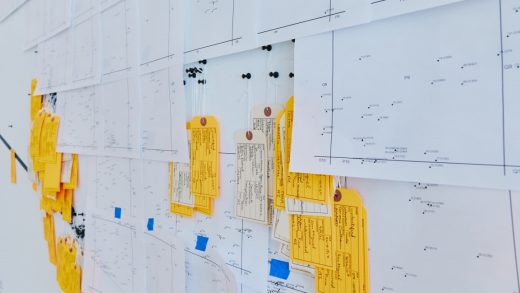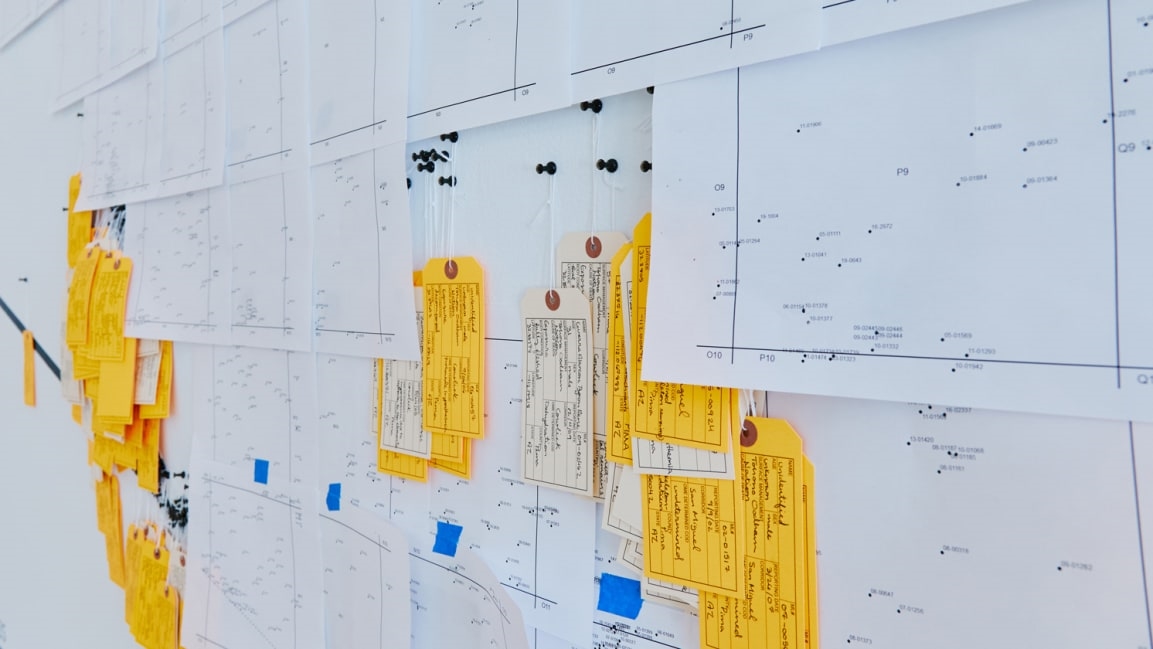A humanitarian crisis plagues the U.S.–Mexico border. See just how deadly it is
The white wall is awash with yellow toe tags. Over 1,500 of them, scattered along a line of the U.S.–Mexico border. Each tag represents an immigrant who has died trying to cross the border, pinned in the exact location where their remains were found. If the map were a complete depiction of recent history, it would show well over 7,500 tags.
Since 1994, the nonprofit organization Border Angels estimates that at least 7,500 people have died while attempting to cross the U.S.–Mexico border. Last year alone, the remains of 227 migrants trying to cross the Sonoran desert in Arizona were found, making it the deadliest year on record.
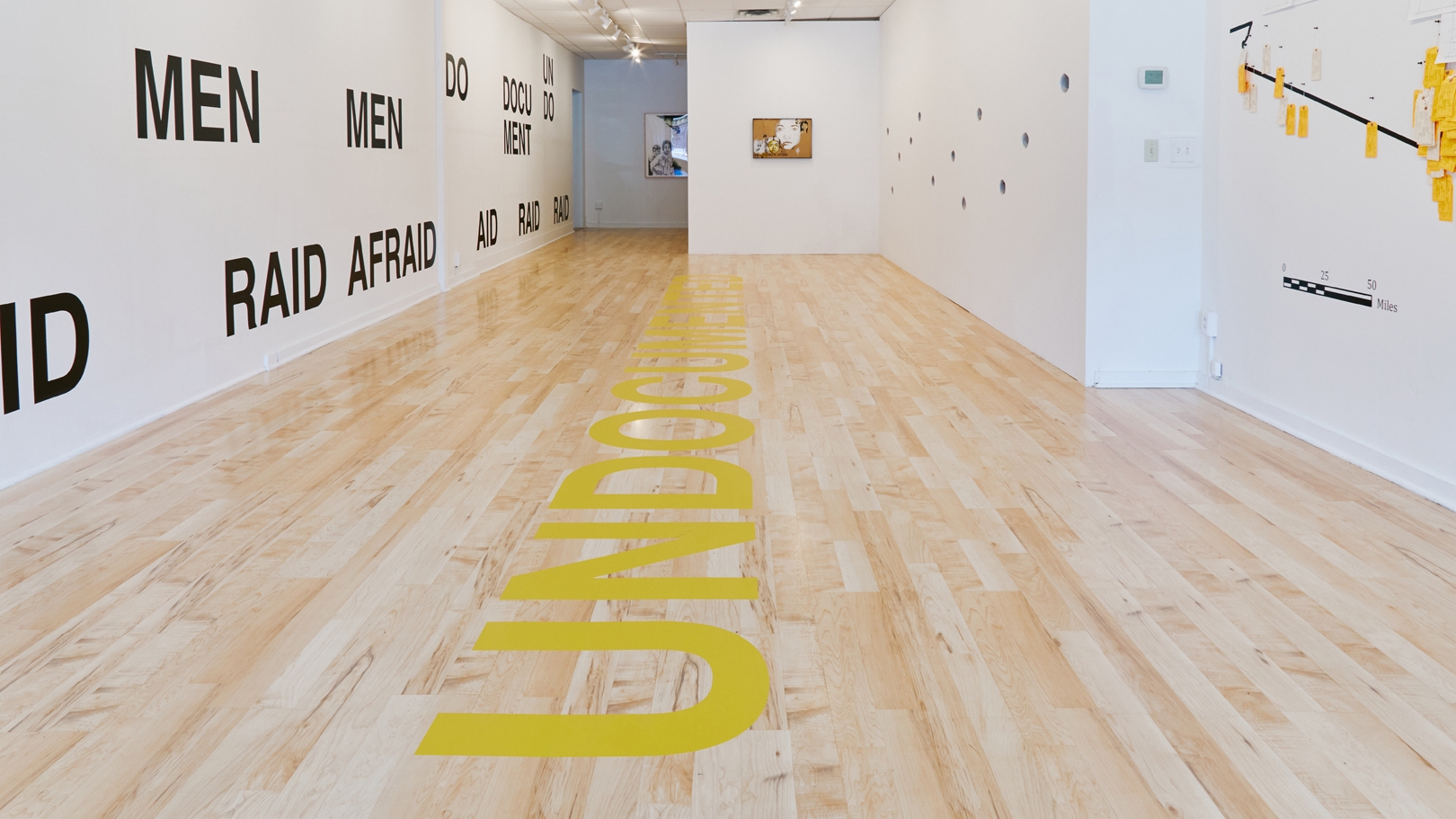
The reality of undocumented migrant deaths has long been shrouded in an “out of sight, out of mind” mentality. A new exhibit in North Adams, Massachusetts, is here to bring the issue well into sight. It is part of a larger art project that was created by the Undocumented Migration Project. With over 130 exhibitions in the United States and abroad, the project seeks to raise awareness about the realities of the U.S.–Mexico border and the number of people who continue to die as a result of an immigration enforcement strategy that was implemented in 1994. Aptly named Hostile Terrain 94, it has roots in the United States—but the humanitarian crisis plaguing the country’s border is a universal emergency.
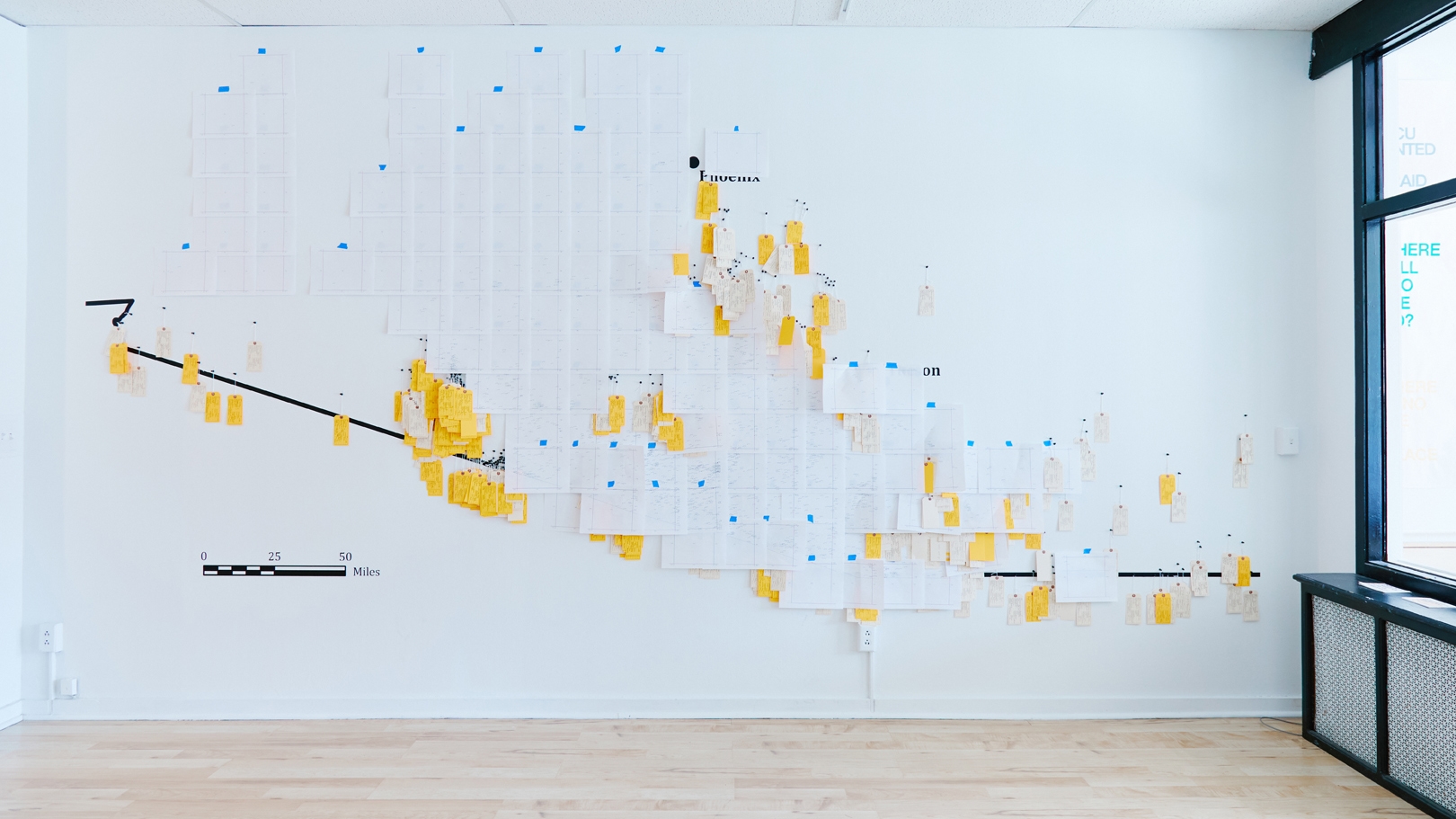
In North Adams, the map with the toe tags dominates one wall of the Massachusetts College of Liberal Arts (MCLA) Gallery 51 downtown. Every toe tag includes details like the person’s name, age, and gender, as well as the cause of death and the body condition—and every one of them has been filled out by an array of people like students and professors from the Massachusetts College of Liberal Arts. “I became interested in seeing whether or not instead of us constructing a map, we could ask people to make their own maps,” says Jason De León, the executive director of the Undocumented Migration Project, and an anthropology professor at UCLA. The physical act of writing out the names of those who have passed invites participants’ reflection and empathy. (In North Adams, most of the tags were filled out during the pandemic, which slowed down the process, so the map is still growing.)
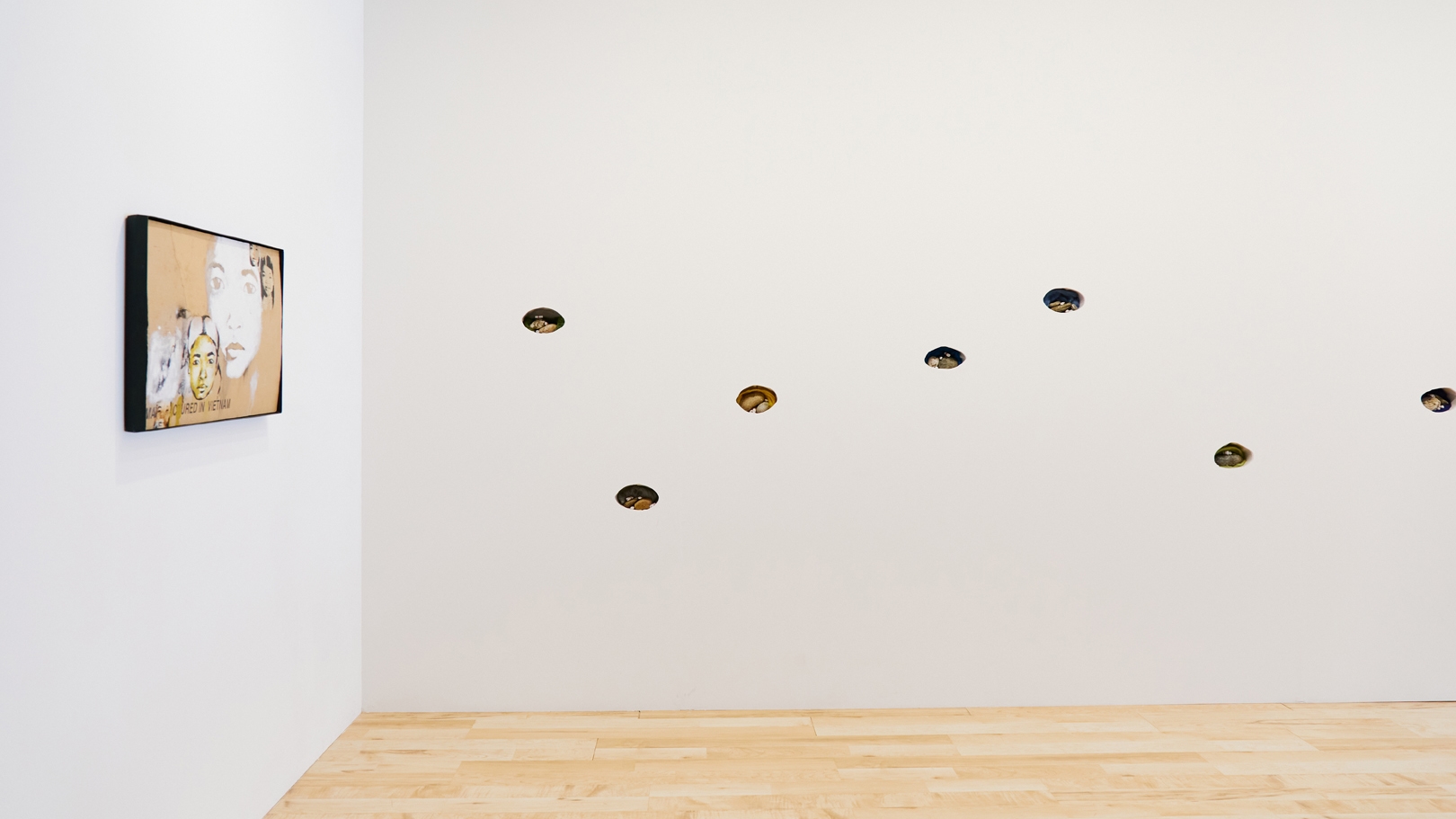
The exhibition is anchored by the map, but it features works by other artists—like Vietnamese–American visual artist Trinh Mai, or Mexican photographer Sergio De La Torre—who tell a bigger story about immigration and the refugee experience. “This is happening all over the world, it’s people seeking asylum for lots of reasons,” says exhibition curator Erica Wall, who is also director of the MCLA’s Berkshire Cultural Resource Center. “What would it cost someone to risk their lives to come across this border?”
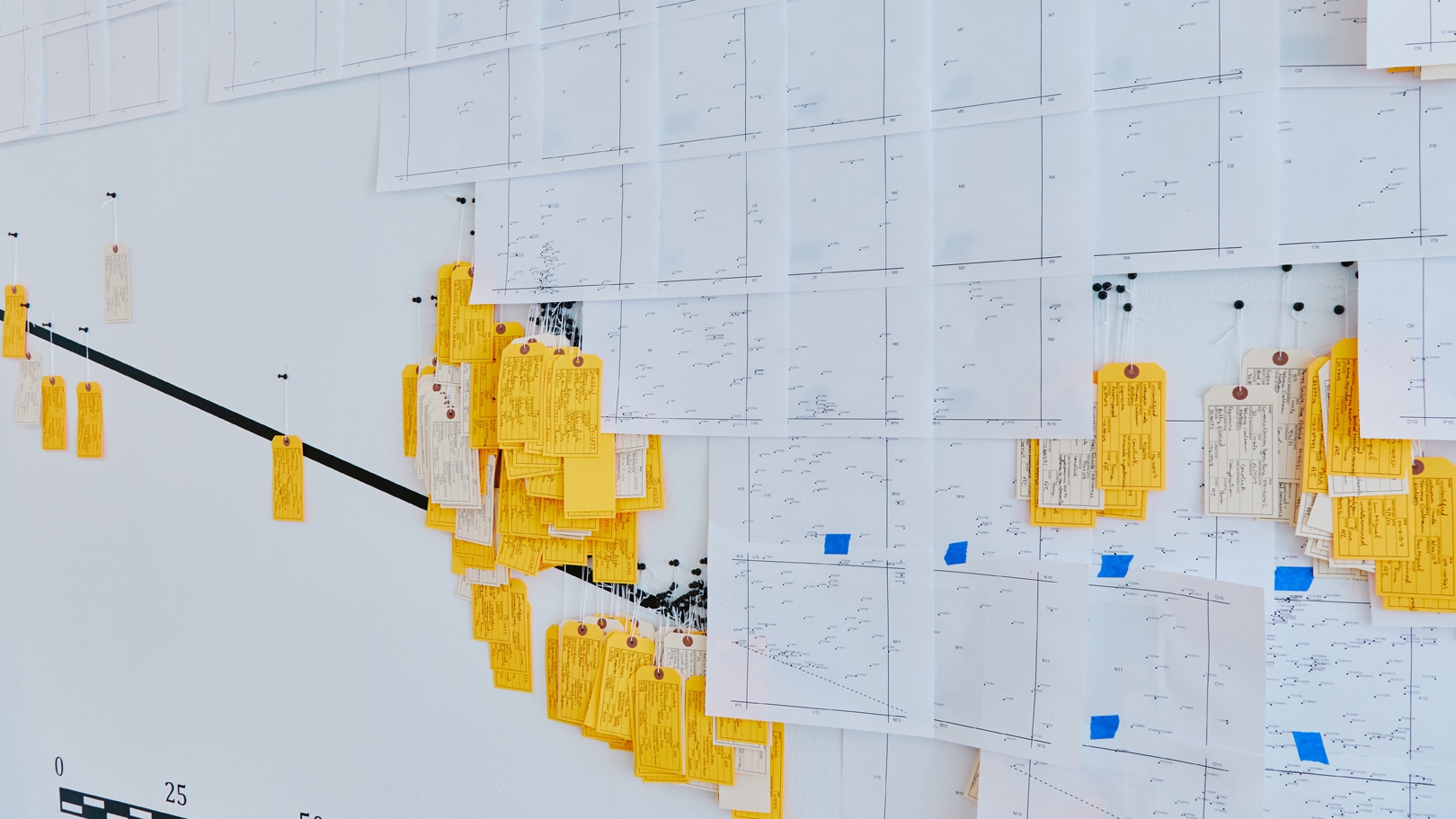
In 1994, the United States Border Patrol implemented an immigration enforcement strategy known as “Prevention Through Deterrence,” which made that risk even higher. Before then, De León explains that people often waited until dark and hopped over the border fence. By closing off historically frequented crossing points like in El Paso in Texas, or Nogales in Arizona, the government funneled individuals in more remote regions in the hopes that the harsh conditions and unforgiving environment would deter them from crossing and walking up to 60 miles to reach a populated area. “Nature itself has been weaponized and turned into a wall,” says De León. “It’s the number one security paradigm that characterizes the entire length of the Mexico border.”
This past July was the busiest month for illegal crossings in over 21 years. “People are desperate,” says De León, and reasons vary from people fleeing drug wars, to political instability and economic insecurities, to hurricanes—and of course the pandemic. “All of those things are making those places unlivable,” he says.
And then there are other asylum policies like Trump’s “Remain in Mexico,” which the Biden administration had ended but is reinstating next month. It requires asylum seekers arriving at the border to wait for their U.S. immigration court hearings in Mexico. “I would argue the Remain in Mexico policy leads to more people trying to cross the Mexico–U.S. border illegally,” says De León, noting that if people are relegated to Mexico, they often end up in refugee camps where they are humiliated, persecuted by law enforcement, and preyed on by gangs and drug cartels. “Those are forms of deterrents the government has been using for a long time; they force people to make different decisions,” he says. In many instances, these decisions could lead to death.
One of the deadliest regions is the Sonoran Desert in southern Arizona. Since 2000, more than 6 million migrants have attempted to cross through the Sonoran desert. At least 3,200 of those have died, and that’s the number of toe tags that De León’s team sends out in a kit to whichever organization is interested in organizing the exhibition (for a fee of $2,100, which helps with staffing and production costs). By the end of the year, about 40 exhibitions will have occurred in places like the Henry Art Gallery in Seattle, and the University of Victoria in Canada. By 2023, De León says the exhibition will have reached 6 continents, including exhibits in Morocco, Germany, El Salvador, and Australia.
According to the International Organization of Migration’s Missing Migrants Project, more than 75,000 migrant deaths have been recorded around the world since 1996. A vast majority of migrant deaths recorded by the project have occurred in the Mediterranean Sea, where almost 19,000 people have been recorded dead or missing since 2014. And those numbers are likely much higher as many deaths remain unrecorded.
It is a sad truth, but the fact that the project has found so many homes across the globe speaks volumes. “People see [the exhibition] as a way to draw global connections between migration crises happening in the western hemisphere,” says De León, “and connect the dots in their own backyards.”
(54)

